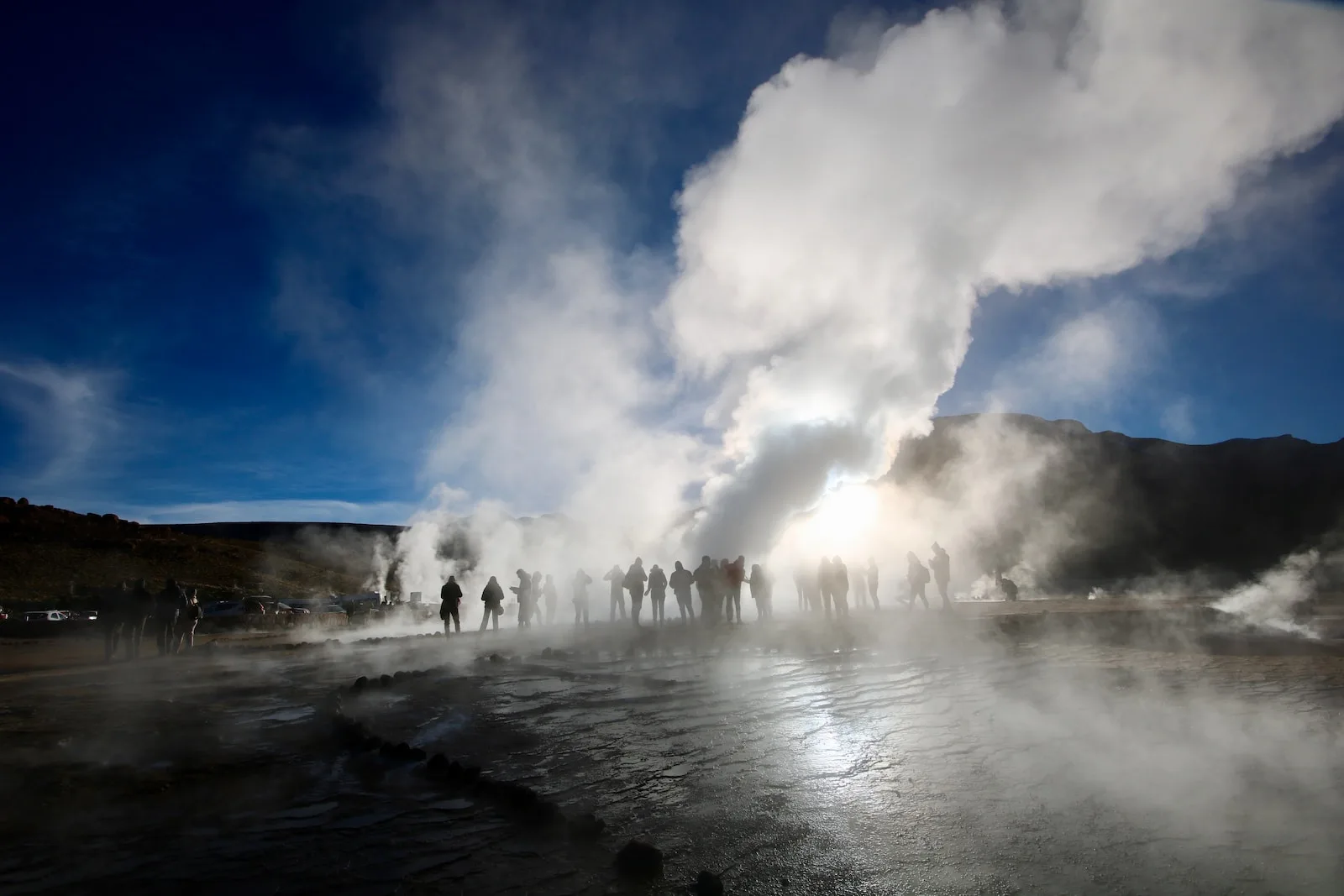When it comes to mountains and hills, we often use the terms “peak” and “summit” interchangeably to refer to their highest points. However, there is a subtle difference between the two. Understanding this distinction can help us accurately describe these geographical features and enhance our mountaineering knowledge.
A “peak” typically refers to the highest point of a mountain range. It represents the pinnacle of an entire range, standing tall and proud. On the other hand, a “summit” specifically denotes the highest point of an individual mountain or hill. Imagine it as the ultimate peak of a singular entity.
By recognizing the difference between peaks and summits, we can better communicate and visualize these natural landmarks. Whether you’re a passionate hiker or simply fascinated by geography, let’s dive deeper into the characteristics, usage, and significance of peaks and summits.
Key Takeaways:
- Peaks refer to the highest points of mountain ranges, while summits specifically denote the highest points of individual mountains or hills.
- Peaks are part of larger mountain ranges and are often characterized by their elevation, steepness, and rockiness.
- Summits, although also exhibiting high elevation and steepness, are more commonly associated with being reachable by climbing.
- Using the terms “peak” and “summit” correctly is essential for effective communication, both in the context of mountaineering and geographic descriptions.
- Both peaks and summits hold significance in various activities and fields, representing achievements, landmarks, and opportunities for gatherings and decision-making.
Characteristics of Peaks and Summits
Peaks and summits have distinct characteristics that set them apart. Understanding these characteristics is essential for differentiating between the two.
Elevation, Steepness, and Rockiness
Peaks are often characterized by their high elevation, steep slopes, and rocky terrain. They can be part of a larger mountain range and are prominent features that attract hikers, climbers, and tourists seeking to conquer them. Their towering presence and challenging conditions make them a thrilling and rewarding endeavor for adventurers.
Summits, on the other hand, are the highest points of individual mountains or hills. While they may also exhibit high elevation, steepness, and rockiness, they are more commonly associated with being reachable by climbing. Mountaineers and outdoor enthusiasts often set their sights on summiting these peaks, relishing the accomplishment of reaching the highest point.
Accessibility and Context
Peaks are often part of a mountain range, offering a panoramic view of the surrounding landscape from their lofty heights. They serve as landmarks and indicators of elevation, guiding travelers and providing reference points for mapping and navigation. Their grandeur and prominence contribute to their role in geographical descriptions.
On the other hand, summits are specific to individual mountains or hills and are reachable by climbing. They may not always offer expansive views, but they hold their own allure as the pinnacle of a particular geographical feature. Summits provide a sense of accomplishment and satisfaction, marking a successful ascent and allowing climbers to celebrate their achievement.
In summary, while both peaks and summits share common characteristics such as elevation and steepness, they differ in their context and accessibility. Peaks are part of larger mountain ranges and offer sweeping vistas, while summits are the highest points of individual mountains or hills, attainable through climbing. Understanding these distinctions enhances our appreciation for the wonders of nature and the thrill of mountaineering.
Understanding the Usage of “Peak” and “Summit”
Using the words “peak” and “summit” correctly in a sentence is crucial for effective communication. In the context of mountain climbing, “peak” is often used to describe the highest point of a mountain or hill, while “summit” specifically refers to the highest point that is reachable by climbing.
It’s important to understand the appropriate usage in order to convey the intended meaning. Additionally, the terms “peak” and “summit” are commonly used in geographic descriptions to indicate the highest points of mountain ranges or individual mountains.
Understanding Peaks and Summits in Geography
In geography, knowing the difference between peaks and summits helps provide more accurate descriptions of mountainous regions. A “peak” signifies the highest point of a mountain range, often distinguishing it from surrounding peaks within the same range. On the other hand, a “summit” refers to the highest point of an individual mountain or hill.
By understanding these distinctions, geographers and cartographers can accurately label and represent the topography of an area. This ensures precision in geographical maps and aids in navigation, scientific research, and environmental studies.
Whether discussing mountaineering or geographic features, grasping the usage of “peak” and “summit” is essential for clear and concise communication.

The Significance of Peaks and Summits
Both peaks and summits hold great significance in various activities and fields. Understanding their key differences and similarities adds depth to our appreciation of these remarkable geographical features.
Peaks are not only symbols of accomplishment, but also attract hikers, climbers, and tourists who seek to conquer the highest points. Standing atop a peak provides a sense of achievement and offers breathtaking panoramic views. Peaks also serve as landmarks and indicators of elevation, allowing us to orient ourselves in the vastness of the surrounding landscape.
Summits, on the other hand, hold importance in a different context. In the realm of meetings and conferences, a summit refers to a gathering of experts or leaders in a particular field. These summits provide opportunities for discussing important issues, sharing knowledge, and making decisions that shape the future. They foster collaboration and create platforms for advancing industries and economies.
While peaks and summits have distinct characteristics, they both represent significant points of interest. Whether we are scaling a mountain or attending a summit, these remarkable features have the power to inspire, challenge, and connect us with the natural world and the global community.
Common Mistakes and Exceptions
When it comes to discussing peaks and summits, there are common misconceptions that can lead to misunderstandings. One of the most frequent mistakes is using these terms interchangeably without considering their specific meanings. It’s important to remember that “peak” refers to the highest point of a mountain range, while “summit” specifically denotes the highest point of an individual mountain or hill. By using the correct terminology, you can accurately describe the location you are referring to.
Another common misconception is assuming that all high points on a mountain or hill can be called peaks or summits. However, there are exceptions to these definitions. Some regions have different criteria for classifying mountains and may use alternative terms such as “fells,” “tors,” or “bens” to describe elevated features. These exceptions highlight the need to consider the specific context and terminology used in different geographical areas.
Exceptions to Peak and Summit Definitions
- In certain regions, mountains may be classified differently, leading to alternative terms like “fells,” “tors,” or “bens” being used for elevated features.
- Some areas may have specific criteria for determining what constitutes a peak or a summit.
By understanding these exceptions and misconceptions, you can have a clearer grasp of the differences between peaks and summits, and avoid using the terms incorrectly. It’s essential to use the correct terminology depending on the specific context and geographical location you are referring to.

With a better understanding of the common mistakes and exceptions surrounding peaks and summits, you can communicate more effectively and accurately describe the highest points of mountains and hills. By using the correct terms and considering the specific context, you can avoid confusion and ensure that your message is conveyed clearly.
Conclusion
In conclusion, understanding the difference between peaks and summits is essential when discussing mountainous terrain. While these terms are often used interchangeably, they have distinct meanings that allow for more precise descriptions. Peaks refer to the highest points of mountain ranges, whereas summits specifically denote the highest points of individual mountains or hills.
Recognizing the characteristics of peaks and summits further enhances our understanding of these geographical features. Peaks are known for their elevation, steepness, and rockiness, making them prominent attractions for hikers, climbers, and tourists. On the other hand, summits, while also exhibiting high elevation and steepness, are more commonly associated with being reachable by climbing.
Both peaks and summits hold significance in various activities and fields. Peaks serve as landmarks and achievements, attracting adventurers who aim to conquer the highest points. Summits, in a different context, represent gatherings of experts or leaders in a particular field, providing opportunities for discussions and decision-making.
By avoiding common mistakes and understanding exceptions, we can effectively communicate about peaks and summits. It is important to use the correct term depending on the specific context and consider any alternative terms used in different regions. This knowledge enhances our understanding of mountaineering terminology and geographical features.
FAQ
What is the difference between peaks and summits?
Peaks refer to the highest points of mountain ranges, while summits specifically denote the highest points of individual mountains or hills.
What are the characteristics of peaks and summits?
Peaks are often characterized by their elevation, steepness, and rockiness. Summits, on the other hand, are the highest points of individual mountains or hills and are commonly associated with being reachable by climbing.
How should I use the words “peak” and “summit” correctly?
“Peak” is often used to describe the highest point of a mountain or hill, while “summit” specifically refers to the highest point that is reachable by climbing.
Why are peaks and summits significant?
Peaks are seen as achievements and attract hikers, climbers, and tourists. Summits, on the other hand, hold importance in the context of meetings and conferences, where they refer to gatherings of experts or leaders in a particular field.
What are some common mistakes and exceptions related to peaks and summits?
One common mistake is using “peak” or “summit” to refer to any high point on a mountain or hill without considering the specific context. Additionally, certain regions may have different criteria for classifying mountains or may use alternative terms to describe elevated features.



